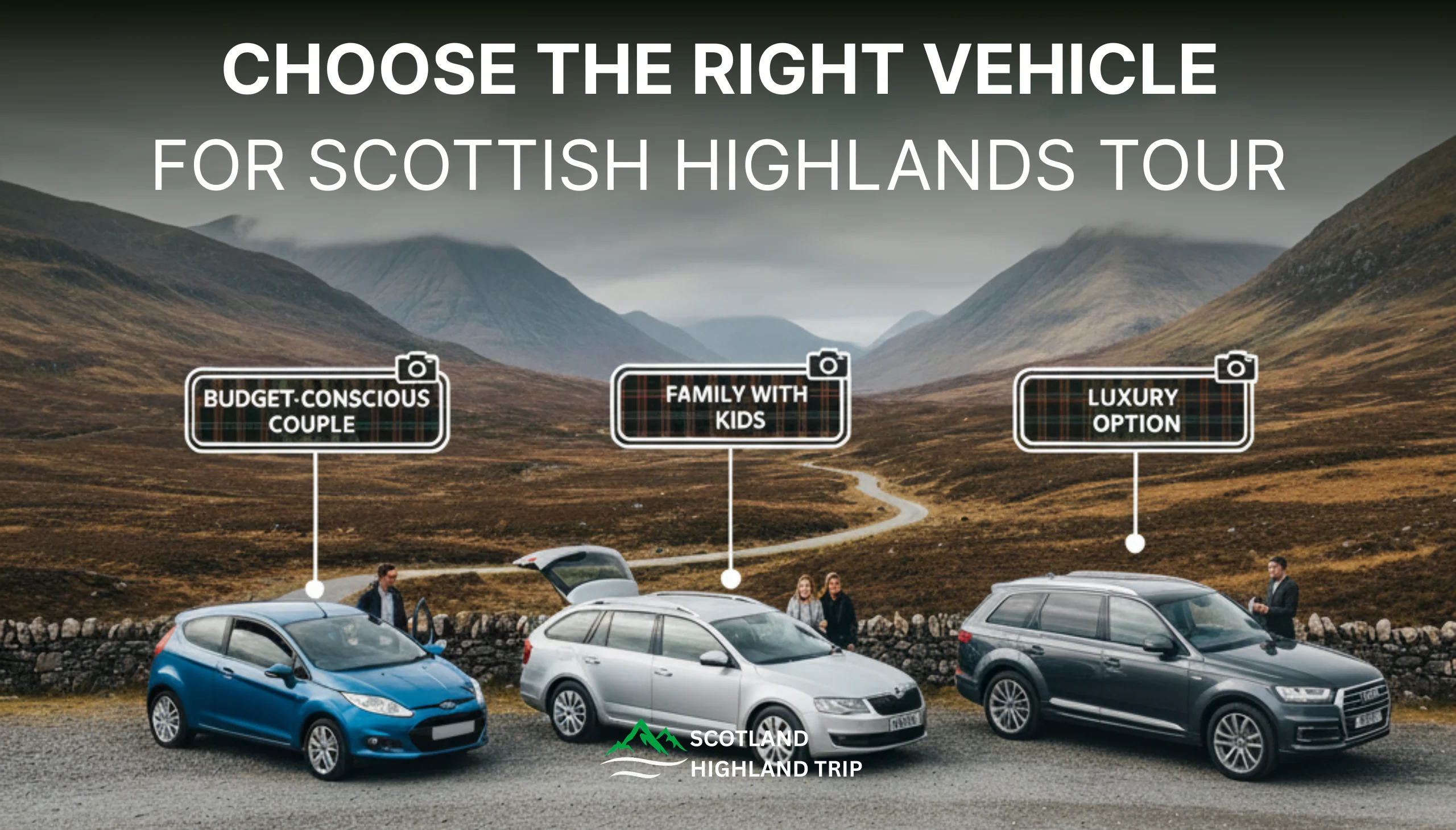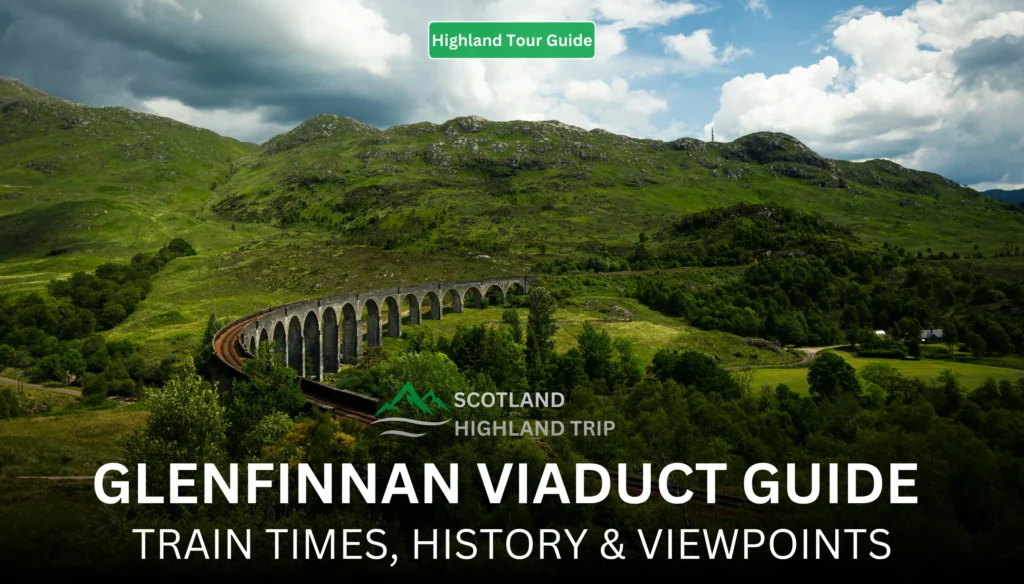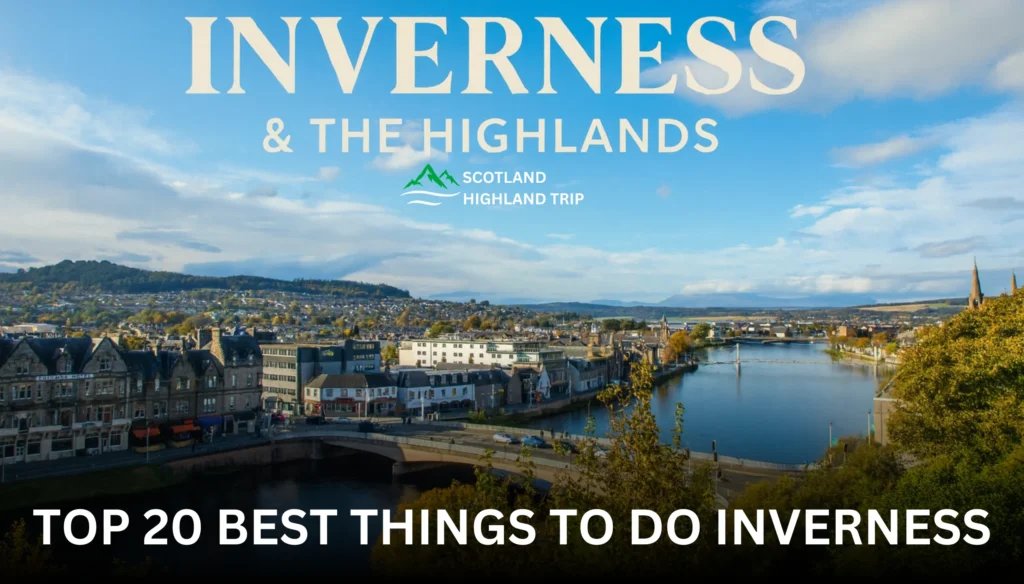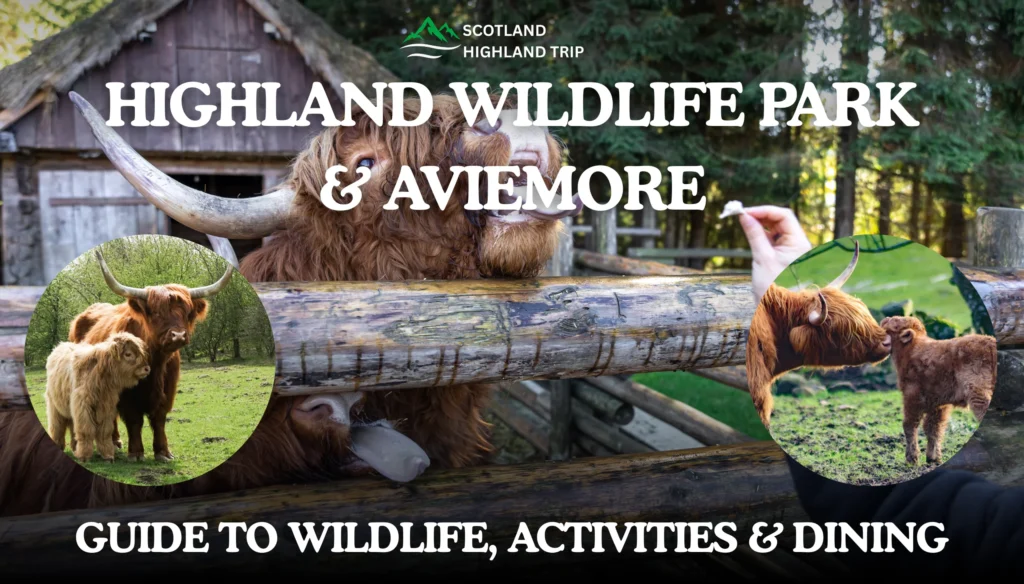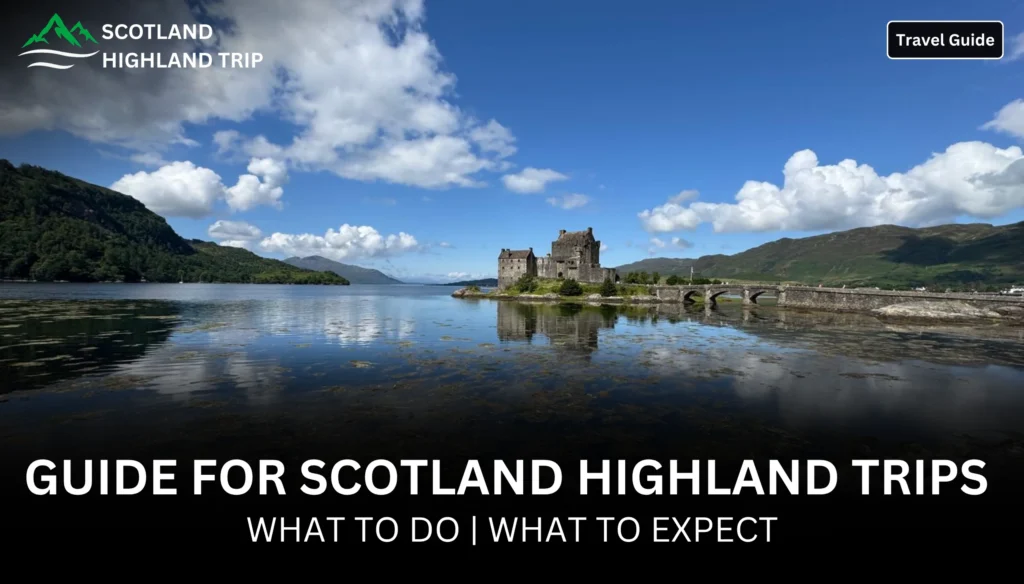A Scottish Highlands tour is one of the world’s iconic road trips. Jagged peaks, shimmering lochs and windswept glens create scenes that stop visitors in their tracks. Yet the region’s remoteness and narrow, twisting roads mean the vehicle you choose will define how relaxed (or stressful) your journey feels. In this guide, we covered everything you need to know before selecting a chauffeur service. We’ll look at road conditions, group size, seasonal weather and eco‑friendly options so you can enjoy the Highlands without worrying about the car.
Jump to Section
Highland roads at a glance
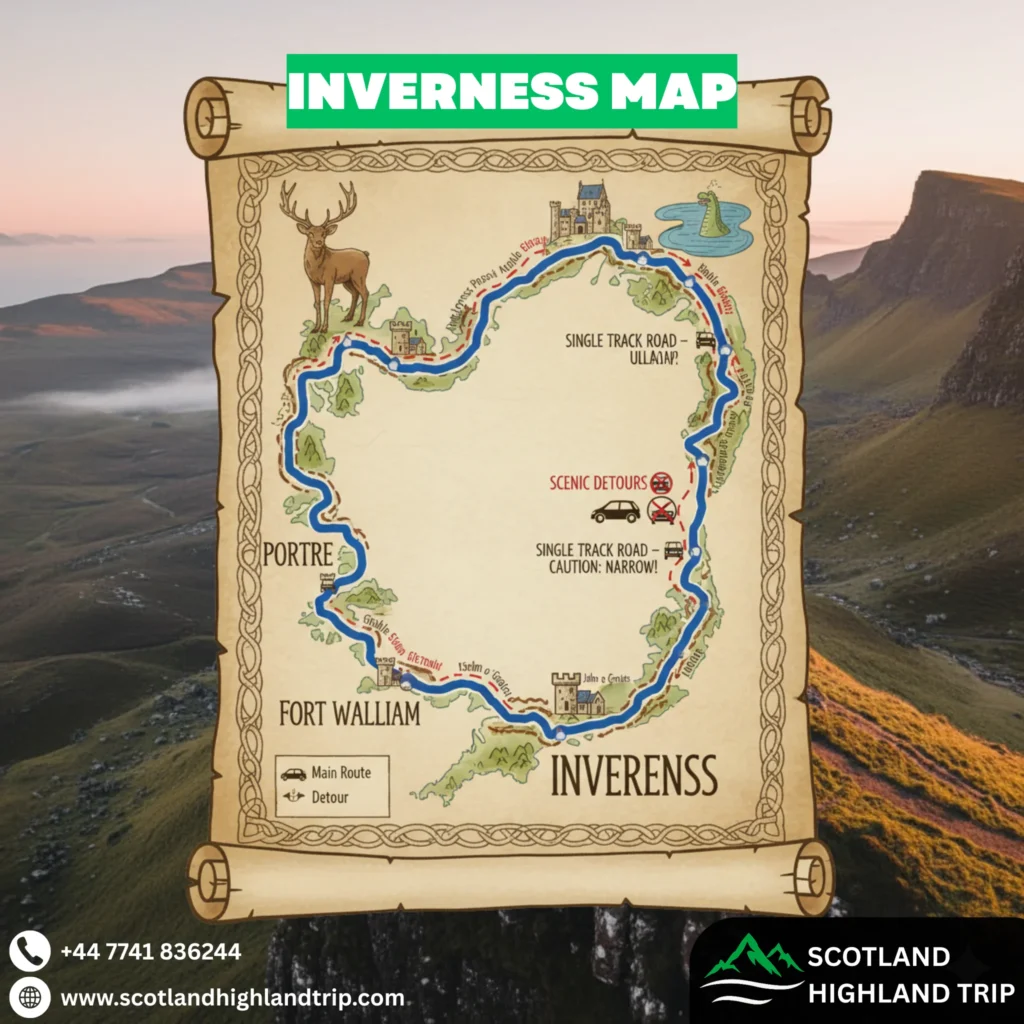
- Single‑track roads & passing places: Much of the Highlands is served by single‑track roads with passing places. Narrow roads can feel tight for a large motorhome and smaller vehicles are easier to park and manoeuvre. Drivers are expected to use lay‑bys and passing places to let oncoming traffic or faster vehicles pass.
- Manual transmissions: Manual transmissions are still the norm in the UK. Automatic cars are available but limited in supply and cost more; booking early is essential. The shift pattern remains the same even though you shift with your left hand.
- Driving on the left: Like the rest of the UK, Scotland drives on the left. Taking a local lesson in Edinburgh, Glasgow or Inverness can help you adjust.
- Parking & size constraints: Car parks at popular viewpoints can be tight. A smaller car makes it easier to find a legal space and avoids blocking gateways.
The key takeaway is that the Highlands reward agility and planning. With this context, let’s explore which vehicle type suits your adventure.
Assessing Your Travel Needs
Before picking a vehicle, think about your party size, comfort expectations and itinerary. The Highlands span more than 700 miles on the North Coast 500 route, but there are numerous detours, ferries and mountain passes that may influence your choice. Use these questions to clarify your needs:
How many people and how much luggage?
If you’re travelling solo or as a couple with minimal luggage, a compact hatchback is often sufficient. Groups of 4–5 with hiking gear may need a larger saloon or SUV. Families with children might prefer a minibus or people‑carrier to ensure everyone has a seat with a view.
Where will you go?
The classic Scottish Highlands tour usually starts in Edinburgh or Inverness, follows the A9 north through Cairngorms National Park, loops around the North Coast 500 and detours to Fort William, Glen Coe and the Isle of Skye. Single‑track roads with hairpin bends (e.g., the Bealach na Bà pass near Applecross) can be intimidating in a large vehicle.
What comfort level do you expect?
Luxury travellers might prefer a premium SUV or performance car, while budget travellers are happy with a small hatchback. Adventurers wanting to camp might choose a campervan or motorhome.
When are you travelling?
Weather can vary dramatically. Spring and autumn offer mild temperatures and fewer crowds. Summer brings long daylight hours but more traffic; winter may mean snow and road closures, so a vehicle with good ground clearance and appropriate tyres is vital.
Vehicle Types: Pros and Cons
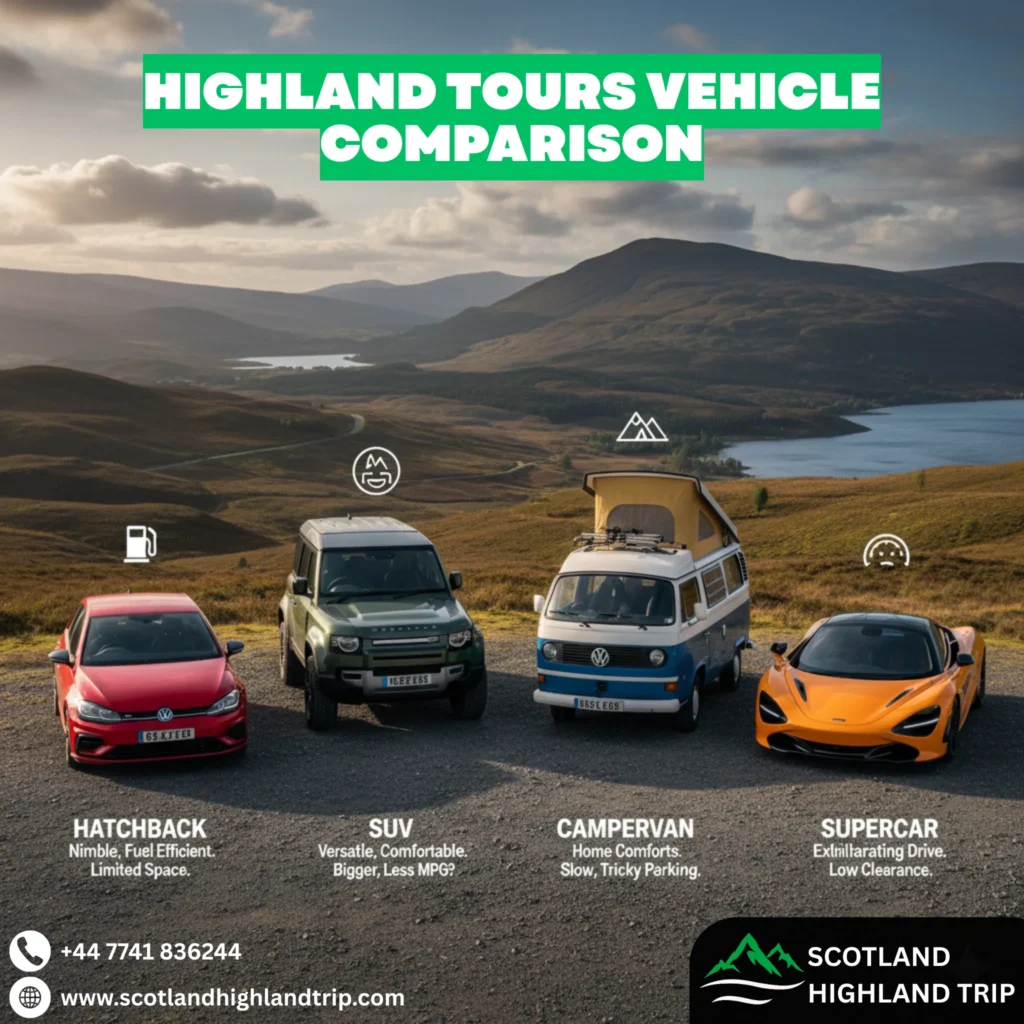
1. Small & Compact Cars
Compact cars (Volkswagen Golf, Ford Focus, Toyota Yaris) are ideal for most visitors. A road‑trip expert who drove the North Coast 500 recommends a small hatchback to reduce nerves on narrow tracks. Pros and cons:
- Pros: Easy to manoeuvre and park, economical fuel consumption, lower rental cost and often the most available option. Great for couples or small groups without bulky luggage.
- Cons: Limited luggage space; may struggle on steep passes when fully loaded; some models lack all‑wheel drive or high ground clearance.
2. Sedans & Estate Cars
Standard sedans or estates (e.g., Skoda Octavia, Mercedes C‑Class estate) provide more boot space and comfort without becoming unwieldy. They suit families or small groups planning longer trips with more gear. Automatic versions exist but must be booked early.
- Pros: Bigger boot for luggage and sports equipment; comfortable on motorways and long distances; often more powerful engines.
- Cons: Slightly wider on narrow roads, manual transmission may require practice; fuel consumption is higher than small cars.
3. SUVs & 4×4 Vehicles
SUVs have grown popular for their higher seating position and all‑wheel drive. However, a four‑wheel drive isn’t necessary for the NC500 and that small car is sufficient. Still, SUVs may be useful when driving to remote trailheads or during winter.
- Pros: Higher ground clearance helps on bumpy single‑track roads and snowy conditions. Spacious interiors and better views for passengers.
- Cons: More expensive to rent and to fuel; more difficult to manoeuvre in small villages or single‑track routes; environmental impact.
4. Campervans & Motorhomes
Campervans offer freedom to wild camp and have your accommodation with you. A couple driving a motorhome noted that narrow roads and small car parks made the 7.5 metre vehicle feel huge, and they would choose a smaller campervan next time.
- Pros: Combine transport and accommodation; ideal for flexible itineraries; no need to pack and unpack daily. Some rental companies include automatic transmission and onboard facilities.
- Cons: Narrow roads and passing places can be stressful. Parking at attractions is difficult. Fuel consumption is high. Some ferries and remote roads have length restrictions.
5. Supercars & Classic Cars
Several companies offer luxury driving holidays where you can hire a supercar, performance car or classic vehicle. For example, a luxury operator emphasises that their tour lets you “discover the majestic landscapes and beautiful driving roads behind the wheel of the supercar or sports car of your dreams or perhaps opt for a luxurious top‑of‑the‑range 4×4”. These experiences suit car enthusiasts seeking thrill and prestige.
- Pros: Exciting to drive; powerful engines make mountain roads effortless; creates a memorable experience; often includes premium hotel packages.
- Cons: High rental cost; limited luggage capacity; low ground clearance makes some single‑track roads risky. Insurance premiums and excesses are high.
6. Electric Vehicles (EVs) & Hybrids

Electric vehicles are gaining popularity, and charging infrastructure in the Highlands is improving. Inverness serves as a reliable hub for EV drivers, and hotels like the Inverness Palace Hotel & Spa provide 22 kW chargers with nearby fast chargers.
- Pros: Environmentally friendly; quiet; instant torque for hill climbs; zero local emissions; some EVs qualify for tax exemptions.
- Cons: Limited range in remote areas; careful planning required; charging networks are developing but still sparse outside major towns. Charging costs vary; at the Palace Hotel it costs £0.48/kWh. EVs may not be suitable for long single‑track detours unless you plan charging stops.
7. Minibuses & People‑Carriers
For groups of six or more, hiring a minibus or people‑carrier (e.g., Mercedes Vito, Ford Tourneo) ensures everyone travels together. Many bespoke tour operators offer small group vehicles with a driver so you can relax and enjoy the scenery.
- Pros: Comfortable for groups; professional drivers navigate tight roads; more storage.
- Cons: If self‑driving, manoeuvring a large vehicle on single‑track roads can be stressful. Fuel costs and rental fees are high. You may need to confirm parking availability with accommodations.
Key Factors When Choosing Your Vehicle
Group Size and Comfort
Small group (1–2 people): A compact or mid‑size car offers enough space without costing much or hindering manoeuvrability. Manual transmission is standard, so book an automatic in advance if needed.
Family or group of 3–5: Choose a sedan, estate or compact SUV. These vehicles provide more luggage space and rear legroom, especially useful when you’re carrying child seats or hiking gear. Consider models with USB ports and air‑conditioning.
Large group (6+): Hiring a minibus with a driver or renting multiple cars may be better than squeezing everyone into a motorhome. Guided tours often include local drivers and comfortable, eco‑friendly vehicles.
Terrain and Route
The Highlands encompass everything from motorways (M90/M80) to twisting passes like Bealach na Bà. A compact car handles city streets and country lanes with ease, while a 4×4 or SUV is preferable if you plan winter skiing trips to Aviemore or remote detours along gravel tracks.
Transmission Type
If you’re not comfortable driving manual, opt for an automatic. Booking early is crucial because automatics make up a small part of rental fleets. Some campervan companies only offer automatics.
Budget and Fuel Economy
Vehicle rental cost increases with size and luxury. Fuel prices in Scotland are higher than in many countries, but smaller European cars are fuel‑efficient. Consider petrol vs. diesel (diesel often gives better mileage). EVs eliminate fuel costs but require planning.
Seasons and Weather
- Spring (April–June): Long daylight, fewer crowds and blooming bluebells. Roads are quieter, making it ideal for small cars or campervans.
- Summer (July–August): Peak tourist season. Expect busy roads and more difficulty finding parking. Book your car or camper early. Beware of midges (tiny biting insects) and pack insect repellent.
- Autumn (September–October): Golden hills, purple heather and mild weather. A great time to avoid crowds.
- Winter (November–March): Short days, snow and ice. Hire a 4×4 with winter tyres or carry snow chains. Some high roads, such as the Cairnwell Pass on the A93, may close. Always check Traffic Scotland updates before travelling.
Environmental Considerations
Sustainability is increasingly important. EV drivers can recharge in Inverness and along major routes. Choosing an eco‑friendly vehicle reduces carbon emissions and noise in fragile environments. Some tour companies advertise eco‑friendly vehicles, combining sustainability with luxury.
Renting vs Bringing Your Own Vehicle
Renting a Vehicle in Scotland
Renting offers flexibility and avoids wear and tear on your own car. According to a Scotland travel guide, renters must be at least 23 years old and have held a valid licence for 12 months. Those aged 23–24 may face restrictions or surcharges. You do not need an international driving permit if your licence is in English.
Automatic vs. manual rentals: Automatics cost more and are limited; book early. Manual cars are cheaper and plentiful, but shifting with your left hand requires practice.
Insurance and excess: Rental contracts include an excess (deductible) of £500–£1,000; buying an excess waiver reduces your liability. Many rental companies upsell GPS units, but travellers often prefer offline maps and a good road atlas.
Car hire locations: The main hire hubs are Edinburgh Airport, Glasgow Airport, Inverness Airport and city‑centre branches. Booking ahead ensures the widest choice. Some self‑drive tour guides even offer discount codes for local car hire; Secret Scotland advertises a 10 % discount with Arnold Clark when booking through their guide.
Using Your Own Car
Driving from continental Europe or within the UK can be rewarding. You are familiar with the vehicle and can pack freely. However, consider wear on the car, the time it takes to reach Scotland, and whether your insurance covers driving abroad. Breakdown cover is essential, and fuel costs can add up. For travellers from Ireland or mainland Europe, ferries operate from Belfast, Liverpool, Zeebrugge and other ports to Scotland; ensure your vehicle is prepared for long distances.
Planning Your Scottish Highlands Tour Itinerary
While the vehicle is crucial, the itinerary determines the driving conditions you’ll face. Below is a sample route that balances iconic destinations with quieter gems. Distances are approximate and start from Edinburgh.
Day 1: Edinburgh to Inverness (approx. 250 km)
Leave Edinburgh via the Forth Bridges and join the A9. Stop at Pitlochry for refreshments, then continue through Cairngorms National Park. Arrive in Inverness, the “Capital of the Highlands,” and use the city to stock up on supplies. EV drivers will find multiple fast chargers and 22 kW chargers at local hotels.
Day 2: Inverness to Isle of Skye (220 km)
Head west along the A82, passing Loch Ness and Urquhart Castle. At Eilean Donan Castle near Dornie, decide whether to drive the scenic Skye Bridge or take the Glenelg–Kylerhea ferry (the latter is seasonal). On Skye, explore Portree, the Old Man of Storr, Kilt Rock and the Quiraing. If driving a motorhome, note that parking at popular spots like Old Man of Storr can be limited.
Day 3: Skye to Fort William via Glenfinnan (190 km)
Return to the mainland and head for Fort William. Take a detour to the Glenfinnan Viaduct for a view of the Jacobite steam train (featured in the Harry Potter films). Continue to Ben Nevis for hiking. The road from Mallaig to Fort William (A830) is scenic but includes single‑track stretches; a smaller car makes passing easier.
Day 4: Fort William to Applecross via Glen Coe and Bealach na Bà (210 km)
Drive through the dramatic Glen Coe valley, then north past Loch Cluanie. Turn onto the Bealach na Bà pass, the steepest ascent in the UK with hairpin bends. Campervans are discouraged here; a smaller vehicle or 4×4 is advisable. End the day in the remote hamlet of Applecross.
Day 5: Applecross to Ullapool (200 km)
Follow the coastal road with views across Loch Torridon and Loch Maree. Pass through Ullapool, a fishing town with ferry connections to the Outer Hebrides. Continue north if time allows; the route to Durness passes white‑sand beaches like Achmelvich. Ensure your vehicle’s fuel tank is full, as petrol stations are sparse.
Day 6: North Coast & Sutherland (300 km)
Explore Sutherland’s remote beaches, sea stacks and cliffs. Drive through Tongue, Bettyhill and John o’ Groats. The roads here can be single‑track with passing places; patience is required when meeting other vehicles.
Day 7: Return to Inverness (260 km)
Head south along the east coast, stopping at Dunrobin Castle and Dornoch. Continue to Inverness, then drive or train back to Edinburgh. Alternatively, extend your trip to Cairngorms for hiking or to Speyside for whisky tasting.
This itinerary is just one way to experience the Highlands. You can shorten it (by skipping the North Coast) or extend it to include Orkney, the Outer Hebrides or the south‑west Highlands.
Safety Tips for Highland Driving
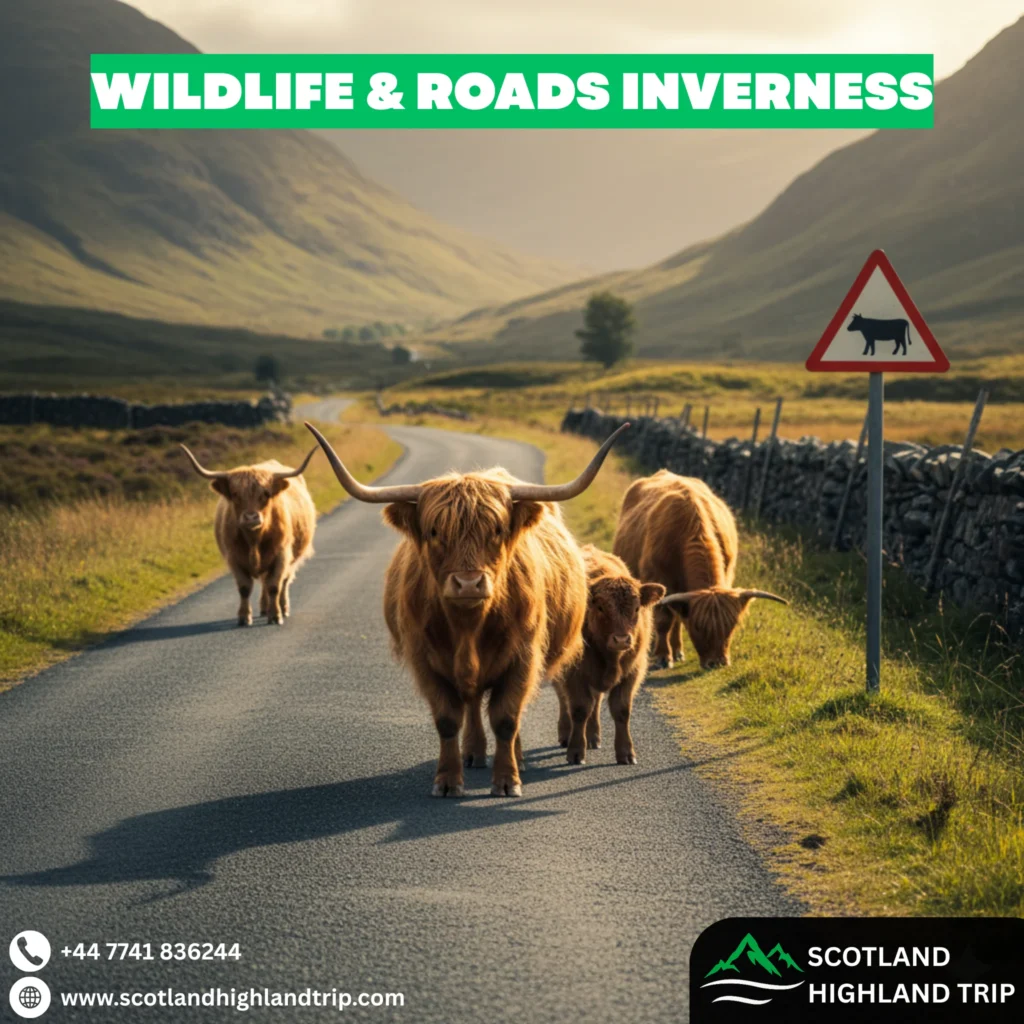
- Practise driving on the left: Take your time the first day; after fifteen minutes you’ll adapt. Use local driving lessons if needed.
- Use passing places properly: Pull into passing places on single‑track roads to let oncoming or faster cars pass. Never park in them. Always acknowledge other drivers with a friendly wave.
- Allow vehicles to pass: If a line of cars forms behind you, use a lay‑by to let them go.
- Book automatic cars early: They are scarce and cost more.
- Watch for animals & cyclists: Sheep, deer, cyclists and walkers are common on rural roads.
- Check fuel and facilities: Fuel stations become rarer north of Inverness. Carry snacks and water, and fill up when you can.
- Weather awareness: Sudden fog or rain can reduce visibility. Slow down and use headlights; avoid using high beams when approaching other cars.
- Parking etiquette: At popular viewpoints, arrive early or late and never block gates or passing places. Motorhomes may struggle in small car parks.
- Check road closures: In winter, some routes (e.g., Cairnwell Pass) close due to snow. Check the Traffic Scotland website before setting out.
Packing & Vehicle Preparation
Must‑have items
- Navigation: Download offline maps and carry a paper road atlas. GPS devices can be unreliable in remote areas.
- Emergency kit: Include a reflective vest, hazard triangle, tyre repair kit, jumper cables and flashlight. Add blankets and extra layers for cold evenings.
- Weather gear: Pack rain jackets, wool layers, gloves and hats. Weather changes quickly.
- Bug protection: Bring insect repellent for midges in summer.
- Food & water: Pack snacks and refillable water bottles; remote stretches may lack services.
- Device chargers & power bank: Keep phones and cameras charged to capture the scenery.
- EV charging apps: If driving electric, download Project EV or ChargePlace Scotland apps. Plan charging stops in Inverness, Lochaber and along the NC500.
Preparing your own vehicle
If you drive your own car, check fluid levels, tyres and brake pads before the trip. Carry spare bulbs and wiper blades. Consider fitting all‑weather or winter tyres during colder months. European travellers may need a UK driving kit (reflective jackets, warning triangle, headlight converters).
FAQ: Vehicle Choice for a Scottish Highlands Tour
Do I need a four‑wheel drive?
For most tours, no. A small hatchback handles the NC500 and single‑track roads just fine. A 4×4 is helpful in winter or if you’re exploring remote gravel tracks, but not essential.
Is it difficult to drive a manual on the left side?
It takes about 15 minutes to adjust. Remember that the shifting pattern remains the same; you just shift with your left hand. If you prefer an automatic, book early.
Are campervans allowed on all roads?
Larger motorhomes struggle on narrow roads and at car parks. Some passes (e.g., Bealach na Bà) advise against long vehicles. A medium campervan is a good compromise.
What about driver age restrictions?
You must be at least 23 years old and have held a licence for 12 months to rent a car in Scotland. Drivers aged 75+ may need a doctor’s note.
Do I need an international driving permit?
Not if your licence is in English. Otherwise, bring an international permit and your passport.
Can I rent an electric vehicle?
Yes. Charging infrastructure is improving, especially around Inverness with 22 kW and fast chargers. Plan your route carefully and check the Project EV or ChargePlace Scotland network for availability.
Pro Tips for an Unforgettable Highlands Road Trip
- Book early: Rental availability (especially automatic cars and campervans) is limited. Advance booking ensures choice and lowers cost.
- Take your time: Allow extra time for unexpected stops. The best moments are often unplanned.
- Support local communities: Stay in family‑run B&Bs, buy from local shops and respect the environment.
- Learn road etiquette: A friendly wave when letting someone pass goes a long way. Always leave passing places free for others.
- Use lay‑bys for photos: Never stop in the middle of the road. Use designated viewpoints to enjoy the scenery safely.
- Check midge forecasts: Sites like smidgeup.com provide midge warnings so you can prepare.
Ready to plan your Scottish Highlands tour? Choose the right vehicle for your adventure and book with confidence. Whether you’re looking for a compact hatchback, a spacious SUV or a luxury supercar, our curated selection of vehicles ensures you’ll have the perfect ride for Scotland’s diverse terrain. Contact our travel team today to start building your dream itinerary, unlock exclusive vehicle discounts and receive personal advice tailored to your travel style. Don’t just visit Scotland, experience it from the driver’s seat.

Emma is a solo traveler and freelance travel writer from New Zealand who spent three weeks exploring the Scottish Highlands. With a deep appreciation for history and landscapes, she booked a series of day tours and a private chauffeur journey with Scotland Highland Trip. From Loch Ness to the Cairngorms, she documented her experience through vivid blog posts and drone footage.

